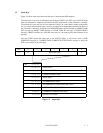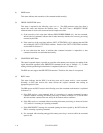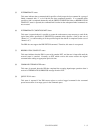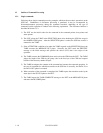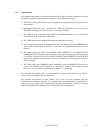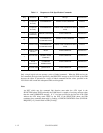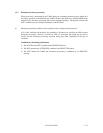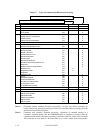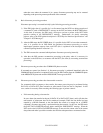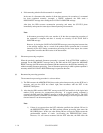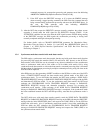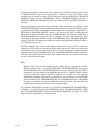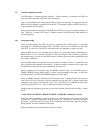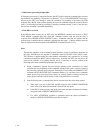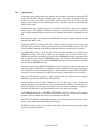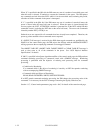C141-E124-01EN 1 - 15
other than cases where the command is in a queue, disconnect processing may not be executed
depending on the processing content specification of the command.
(2) Basic disconnect processing procedure
Disconnect processing is executed basically by the following processing procedure.
1) If the IDD judges that it is possible for it to disconnect from the SCSI bus during execution of
a command, it sends a DISCONNECT message to the INIT and enters the BUS FREE phase.
At this time, if necessary, the IDD sends a message to activate a pointer in the INIT which
precedes sending of the DISCONNECT message. Furthermore, for details concerning
pointers, refer to the SCSI pointer description in “SCSI Physical Interface Specifications” and
“Chapter 2 SCSI Messages.”
2) After the IDD enters the BUS FREE phase, it is possible for the INIT to issue other commands.
Also, it is possible for an IDD which has performed disconnect processing to receive
input/output operation requests from each INIT (this is explained in the description of the
command queuing function in Section 1.4).
3) The IDD executes the command which performs disconnect processing internally.
4) After that, the IDD executes reconnection processing at the point, when it is necessary for
operation on the SCSI bus, to reconnect with the INIT (See item (6) concerning reconnection
processing).
(3) Disconnect processing procedure after COMMAND phase execution
If commands are queued (see Section 1.4), disconnect processing is performed immediately after the
COMMAND phase execution is completed. In this case, the IDD switches from the COMMAND phase
to the MESSAGE IN phase and sends the DISCONNECT message to the INIT.
(4) Disconnect processing procedure after data transfer execution
For commands which accompany a data transfer, disconnect processing may be performed during
DATA IN or DATA OUT phase execution or after transfer of the last data is completed. In this
case, caution is necessary when executing the following types of pointer controls.
a. If disconnecting during a data transfer
In cases where data transfer has begun (in DATA IN or DATA OUT phase) and it will take time
until transfer of subsequent data can be transferred (example: When the data buffer has been
emptied by a READ command, or the data buffer has ceased to be empty due to a WRITE
command), disconnect processing is performed during data transfer. In this case, the IDD sends
the SAVE DATA POINTER message before sending the DISCONNECT message. When the
INIT receives the SAVE DATA POINTER message, it must save the current value of the current
data pointer and make it possible to transfer data from the subsequent data at reconnection time.



